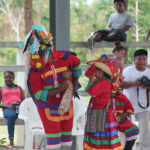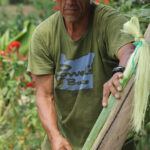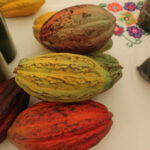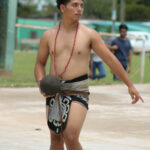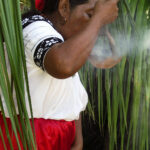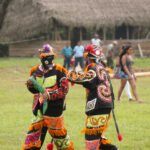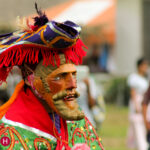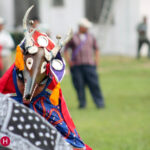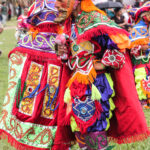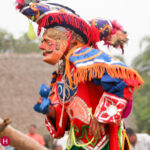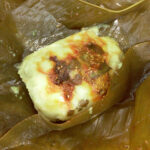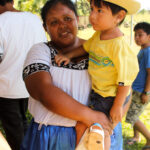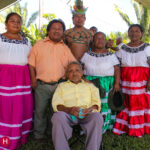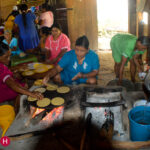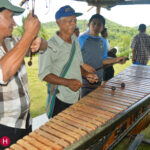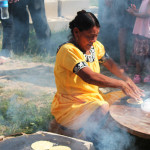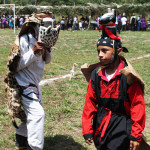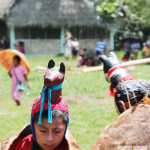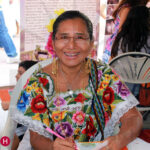Who are the Maya?
Who are the Maya?
The Maya are the descendants of people who inhabited Mesoamerica from 15,000 B.C.E. to present. The Olmec civilization (ca.1200 to 600 B.C.E) influenced the Maya (A.D.250 to 1600) especially in architecture, religion and agriculture. Maya achievements include mathematics and the concept of zero, a calendrical system, astronomy, writing and agriculture.
But when we speak of the Maya today who exactly are we referring to?
Culture/Tradition
It is easy to forget that what makes up culture changes especially if we are living it. It is the same with tradition. Tradition is not something that is stagnant and unchanging. For example, the ‘traditions’ associated with the 10th and 21st of September are evolving and being challenged in our lifetime. The same goes for the term ethnic groups. In fact the term ethnic is itself a new concept in that it evolved out of nation building of former colonies in the 1960s but stems from the 18th century with the evolution of nationalism.
So what is ethnicity? And what makes an ethnic group? In a nutshell, ethnicity refers to a people who share a common national or cultural traditions/beliefs usually bound in history or territory.
So while there are Maya people, there are ethnic divisions because they speak different dialects/languages, have different dress and may have different aspects of the same core beliefs.
Maya People
The Maya people inhabit Yucatan, Mexico, Guatemala, Belize, and Honduras. The population stands at around 4 million with most living in Guatemala (roughly 50 percent of the population). There are about 69 Maya languages/dialects of which 26 languages are spoken in Guatemala. Yucatan also has a large number of Maya people with smaller population live in Belize and Honduras.
The Belize Maya
There are three recognized ethnic groups in Belize. The Yucatec Maya living in Northern Belize and western Belize, the Q’eqchi’ (Kekchi) and the Mopan who live predominantly in the Toledo and Stann Creek Districts together constitute 11 percent of the population. Since the 1970s, there has been internal migration which means that it is not unusual to find pockets of any group living in Belmopan, Belize City and other urban sites in the country.
So if the Mopan and Q’eqchi’ are Maya why don’t they understand each other’s language? Well if we look at the root of French, Italian, Spanish and Portuguese languages.
we can see that at one time they were all the same family-Latin but over generations due to changes in different geographic areas, each language evolved differently. It is the same with the Maya people. Some words like ‘ha’ (water) and witz (hill/mountain) are the same- water in all the languages and dialects.
All Maya have a deep reverence for nature and corn. Gods like Chac, Mam and spirits ‘Wayeb’ are dominant in their religion as well a deep respect for nature. However as more people migrate to urban centres in search of jobs and better standard of living, they are slowly changing the way they interact with nature. This is especially true of the first and second generation of Maya. Travel to rural areas and to places where the dominant culture is Maya and you will find traces of ritual and practices which remain essentially unchanged.
Corn, Candles and Caldo
Maya creation myth has that its people were made from corn after unsuccessful attempts with mud and wood. Nothing compares to this food and continues to be a main part of the diet. The Maya make tortillas- wah, porridges- sa and xpahsa, drinks- pinol, mix it with cacoa (for a hearty snack), Tzit (Dukunu), and poch (boiled masa in a leaf) and chuc wa (cookie).
Corn is so important that its cultivation is imbued with ritual. After the land is cleared, candles, prayers and pom (incense) is offered to the Wayeb of the hills for protection against predators, ill wind and bad luck. In villages today, corn is planted with communal labour and the host family feeds the farmers and their families. Communal labour is also used to harvest corn.
And of course, nothing accompanies tortillas better than Caldo (the Spanish word for soup) which is made from a ‘local’ chicken, with cilantro, culantro, annatto, and ginger, in some cases. If an animal- deer, peccary or gibnut wanders into a milpa, more than likely it becomes the main ingredient in a caldo.
Today, you will find the Maya eating jipijapa, wild bananas and callaloo as well as fried chicken, stewed meat and rice and beans.
Music for fun and Dance
There is heavy suggestion that marimba may be from Africa. Whatever its origin, there is little dispute that the Maya make beautiful music with the Marimba. Some of the music is largely ritual although people do dance to it especially at gatherings. Marimba accompanies sacred dances such as the Deer Dance. This dance takes almost a day to perform and illustrates the power of men, especially non-Mayas over nature. The Cortes Dance choreographs the conquest of the Maya by the Spanish and is highly evocative and tragic. These dances are still performed but because they cost a lot of money, time and commitment from the dancers, it is mostly a yearly or bi-yearly community or village venture. Also the costumes and masks are purified for some time (and fed) before a dancer can use them and this too is costly. Another dance not performed any more in Belize is the Monkey Dance.
Politics
The Alcalde System imposed on the Maya in 1858 by the British colonialist is now an integral part of Maya village life. Village Councils recently instituted are an attempt by the state to administrate locally. However, as in other parts of Belize, it is not unusual to find communities, villages, and families united or divided by the two dominant political parties.
In the late 70s, due to the racist policies of the Guatemalan government towards the Maya, that included massacres, Maya leaders in Toledo, began to worry that the same might happen to them. The Toledo Maya Cultural Council felt the state was ignoring them. TMCC acted as a focus to promote education, indigenous and cultural rights and generally to improve the quality of life of Maya.
Under the leadership of Julian Cho, TMCC’s highpoint included the Ten Points of Agreement in which Maya leaders along with the state signed a blueprint for Maya development. The main reason for this was the logging concessions granted to companies that were of minimum benefit to the Maya who subsisted on the affected area. The struggle for land and indigenous rights continues in Toledo and parts of Stann Creek districts.
Current non-governmental organizations such as Toledo Alcalde Association, The Q’eqchi Council of Belize and the Toledo Maya Women Council continue to promote Maya interests.
Languages/ Surnames
In Belize there are only two main Maya languages: the Yucatec (of which Mopan is a dialect) and Q’echi. Other Yucatec dialects include the Lacadon (Mexico) and Itza (Guatemala). The Maya people have largely retained their Maya surnames which is unique for conquered people who usually take the name of the Europeans. Here are some examples of Maya surnames. The list is by no means exhaustive.
| Name | Language/ dialect | Meaning |
| Ishim/Ixim | Q’eqchi/ Mopan | Corn |
| Itch | Mopan | Eyes |
| Coc | Q’eqchi | Turtle |
| Bul (beul) | Mopan | Bean |
| Cal | Mopan | Neck |
| Tzib | Yucatec | Write |
| Mai | Yucatec | Ankle |
| Bolon | Yucatec | Nine |
| Chiac | Mopan | Vine opening |
| Tzac | Mopan | Medicine |
| Tzalam (Salam) | Q’eqchi | Broomtree |
Acal, Acalha, Ack, Ah, Ash, Batz, Bo, Bol, Canul, Canti, Cheneb, Cho, Chun, Chen, Choc, Choco, Chub, Coh, Cowo, Coy, Coyoc, Cucul, Ical, Itza, Makin, Mes, Oh, Pau, Paquil, Pop, Posh, Rash, Shal, Sam, Saqui, Sho, Tek, Teul, Tush, Tzec…

